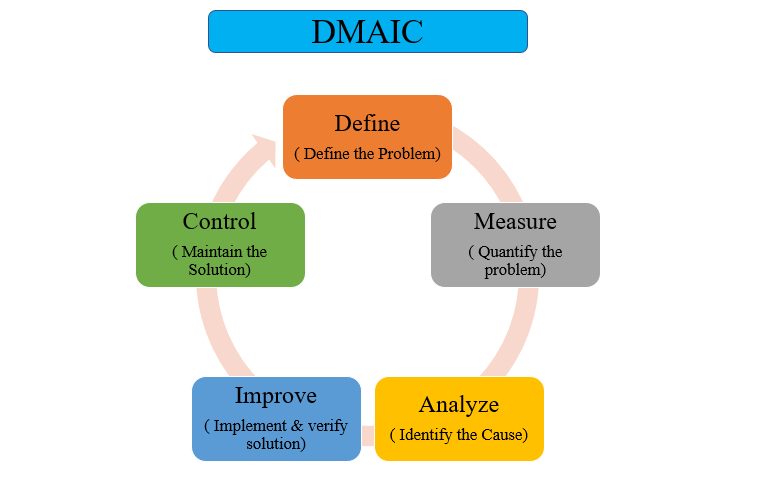DMAIC: Understanding the Framework and its Importance in Business
DMAIC, which stands for Define, Measure, Analyze, Improve, and Control, is a structured problem-solving framework that is commonly used in businesses to enhance their processes and productivity. In this article, we will explore the DMAIC framework in detail, its importance in business, and how it can be applied to achieve better results.
Table of Contents
- Introduction
- What is DMAIC?
- Importance of DMAIC in Business
- The Five Stages of DMAIC
- Define
- Measure
- Analyze
- Improve
- Control
- Advantages of DMAIC
- Applying DMAIC in Business
- Conclusion
- FAQs
Introduction
In the business world, companies are always looking for ways to improve their processes and operations to stay competitive. DMAIC is a framework that helps organizations to identify, analyze, and improve their existing processes. It has been proven to be an effective problem-solving tool that can help businesses achieve their objectives.
What is DMAIC?
DMAIC is a structured problem-solving approach that was developed by the Six Sigma methodology. It is a step-by-step process that helps businesses to improve their processes and identify potential issues that can affect their operations. DMAIC has become a popular tool used by businesses of all sizes, across different industries.
Importance of DMAIC in Business
The DMAIC framework is essential in businesses as it helps to improve productivity, reduce costs, and increase customer satisfaction. It provides a structured approach to problem-solving, making it easier for businesses to identify and solve issues. DMAIC can also help businesses to identify opportunities for improvement, leading to increased efficiency and profitability.
The Five Stages of DMAIC
The DMAIC framework comprises five stages, each of which is critical to the success of the process.
Define
The first stage of DMAIC is to define the problem or opportunity that needs to be addressed. This stage involves clearly defining the problem or opportunity, setting objectives, and establishing a project plan.
Measure
The second stage of DMAIC is to measure the existing process to determine its performance. This stage involves collecting data and identifying key performance indicators (KPIs) that will help to measure the effectiveness of the process.
Analyze
The third stage of DMAIC is to analyze the data collected in the previous stage to identify the root cause of the problem or opportunity. This stage involves using statistical tools and techniques to analyze the data and identify the factors that are contributing to the problem.
Improve
The fourth stage of DMAIC is to improve the process by implementing solutions that will address the root cause of the problem. This stage involves developing and testing solutions, selecting the best solution, and implementing it.
Control
The final stage of DMAIC is to control the process to ensure that the improvements made are sustained over time. This stage involves monitoring and measuring the process to ensure that it is performing as expected, identifying any issues that arise, and implementing corrective actions.
Advantages of DMAIC
The DMAIC framework offers several advantages to businesses. These include:
Provides a structured approach to problem-solving
DMAIC provides a structured approach to problem-solving, making it easier for businesses to identify and solve issues.
Improves productivity
DMAIC helps businesses to improve their processes, leading to increased productivity and efficiency.
Reduces costs
By identifying and addressing the root cause of problems, DMAIC can help businesses to reduce costs associated with inefficient processes.
Increases customer satisfaction
By improving processes, DMAIC can help businesses to provide better products and services, leading to increased customer satisfaction.
Applying DMAIC in Business
DMAIC can be applied to various processes within a business, including manufacturing, marketing, and sales, among others. The DMAIC framework can help businesses to identify opportunities for improvement and optimize their processes to achieve better results.
For example, let’s say a manufacturing company is experiencing a high level of defects in their products. By applying the DMAIC framework, the company can identify the root cause of the problem, develop and test solutions, and implement the best solution to reduce defects.
Similarly, a marketing department can use the DMAIC framework to improve their lead generation process by analyzing their existing process, identifying areas for improvement, and implementing solutions that will increase the effectiveness of their lead generation activities.
Conclusion
The DMAIC framework is a valuable tool for businesses of all sizes, across different industries. It provides a structured approach to problem-solving that can help businesses to identify and solve issues, improve productivity, reduce costs, and increase customer satisfaction. By following the five stages of DMAIC – Define, Measure, Analyze, Improve, and Control – businesses can optimize their processes and achieve better results.
FAQs
- Q. What is DMAIC?
- A. DMAIC is a structured problem-solving approach that helps businesses to identify, analyze, and improve their existing processes.
- Q. What are the five stages of DMAIC?
- A. The five stages of DMAIC are Define, Measure, Analyze, Improve, and Control.
- Q. What are the advantages of using DMAIC?
- A. The advantages of using DMAIC include providing a structured approach to problem-solving, improving productivity, reducing costs, and increasing customer satisfaction.
- Q. How can DMAIC be applied in business?
- A. DMAIC can be applied to various processes within a business, including manufacturing, marketing, and sales.
- Q. Why is DMAIC important in business?
- A. DMAIC is important in business as it helps to improve productivity, reduce costs, and increase customer satisfaction. It provides a structured approach to problem-solving, making it easier for businesses to identify and solve issues.
